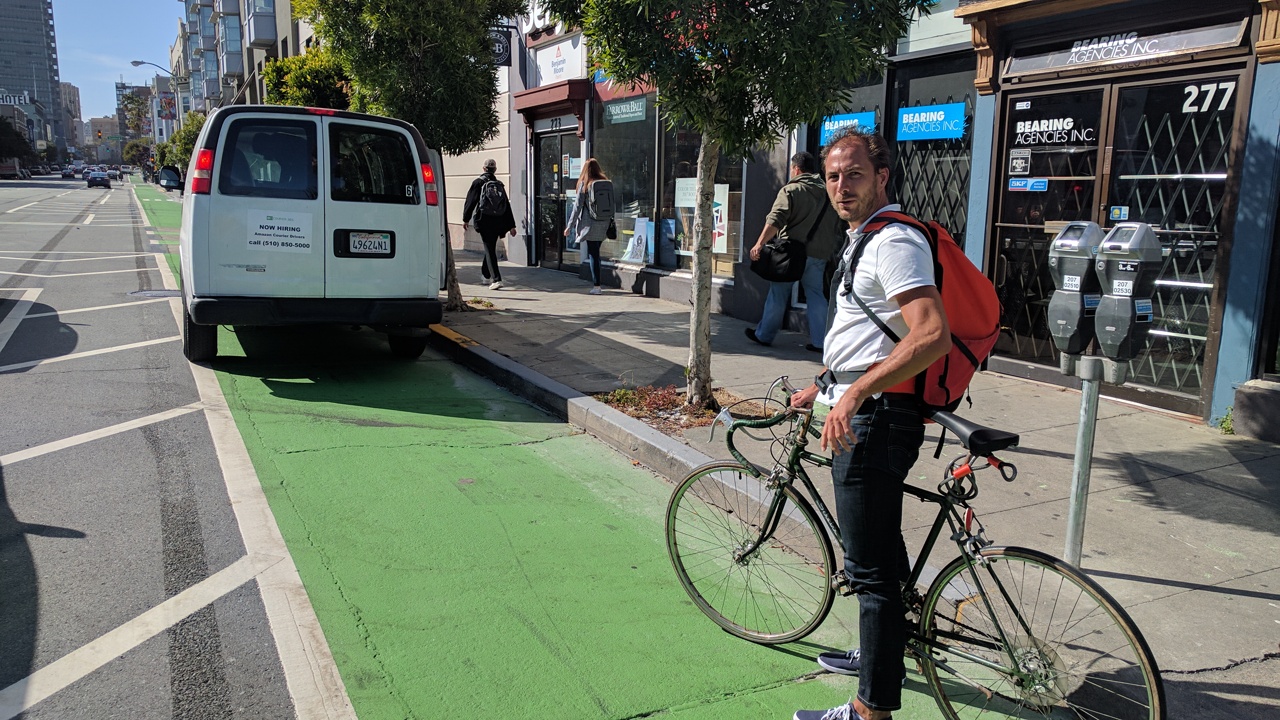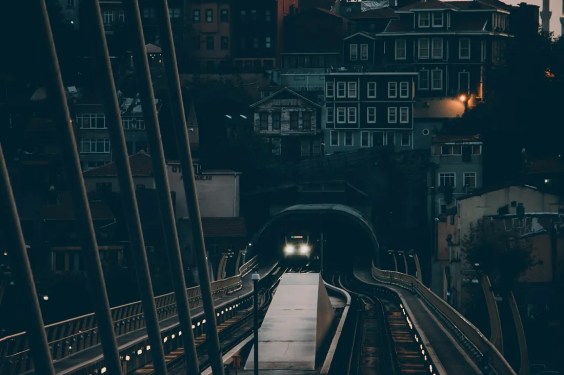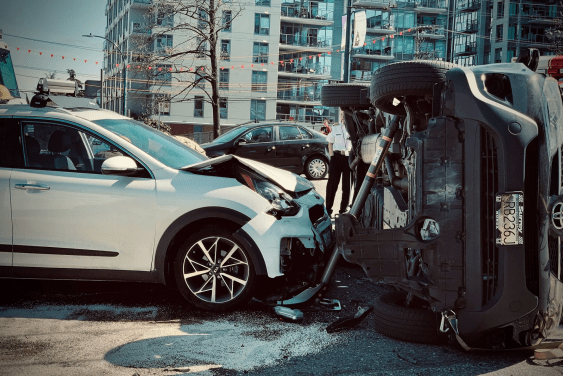Mark Sloothaak is a "Beleidsadviseur" (policy adviser) and urban transportation planner for the City of Amsterdam. But he's currently taking a sabbatical in San Francisco "to see what’s going on over here in smart transportation and smart mobility," he told Streetsblog during an interview in the South of Market neighborhood. "There’s a lot going on with new tech companies such as Uber and Lyft and bike-share companies."
As Streetsblog readers are surely aware, when it comes to public transit, pedestrian safety, and above all good bicycle infrastructure, the Dutch are the global champions. Amsterdam's modal split, which is typical of Dutch cities, is 32 percent of trips by bike, 22 percent by car, and 16 percent by public transport. In the city center, according to the Amsterdam web page, 48 percent of traffic movement is by bike. And Amsterdam doesn't have to pursue Vision Zero goals--they're already there, although the Dutch constantly tweak their infrastructure to make it even better.
So as long as a Dutch transportation planner is here studying our developments, Streetsblog thought it was a good opportunity to get his take on some of the city's newest bicycle and pedestrian safety infrastructure. Yesterday afternoon Streetsblog escorted Sloothaak on a tour of SoMa, mid-Market, and the Wiggle to find out what he thinks we're doing right, what we're doing wrong, and where there's room for improvement.
The tour started at SoMa's Design District traffic circle, where 8th, Division, Henry Adams, and Townsend meet. Sloothaak was impressed to see a traffic circle, usually referred to as a "roundabout" in European parlance, which is the preferred intersection treatment in the Netherlands. "Roundabouts are better... the most important thing is it slows traffic down, you don’t need traffic lights, it’s safe, people are more aware of other traffic, and traffic flow is better," he said.
It was interesting from the start of the tour the way Sloothaak used the words "better" and "slower" almost interchangeably. As someone who has toured Dutch bike infrastructure in Rotterdam, that seemed a familiar theme--the goal of a Dutch traffic engineer is not to pump as many cars as possible through a given intersection, but to keep cars moving at a steady, slow, and safe pace through populated areas. Thus the preference for traffic circles, which force cars to slow down--relative to a standard American-style intersection--but rarely make them come to a complete stop, which is also more fuel efficient. It's also better for bikes, at least in theory, because cyclists don't have to lose all their hard-earned momentum unless there's actually a car or another bike or pedestrian there to yield to.
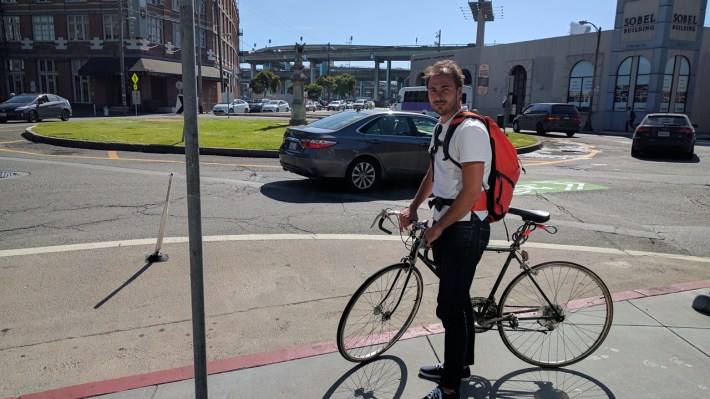
That said, he was a bit puzzled by San Francisco's design, mainly that it also has stop signs, rather than yields. "Why should you stop if there's no traffic?"
And in the Netherlands, of course, protected bike lanes are included where there are major roundabouts on the scale of the one in SoMa. The bike lane is a concentric circle around the automobile lane that keeps cyclists segregated, by a very wide buffer, and safe from motorized traffic, as seen in the image below:
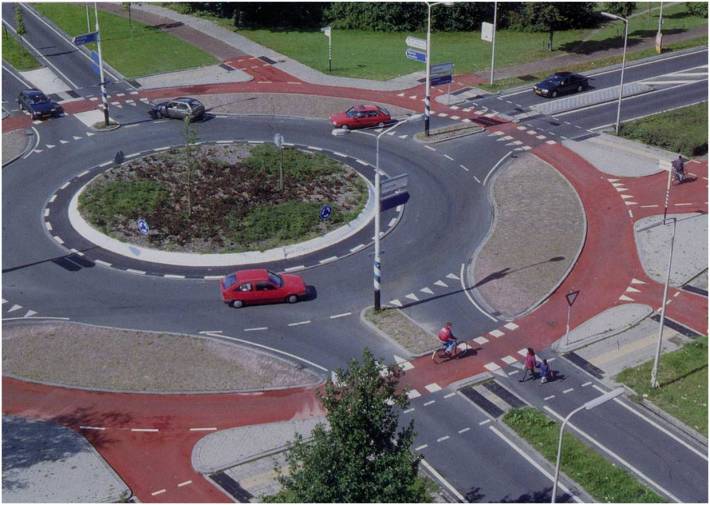
From there, we continued to San Francisco's first, and recently christened, protected intersection at 9th and Division. Sloothaak had some strong criticisms. For one, he didn't think the bike lanes were raised high enough where they crossed the car space. "Raise it with the sidewalk... like this it's not raised enough to slow traffic." He also was disappointed to see that the solid green paint of the bike lane stopped where it was needed most--in the conflict area with cars. "It makes it unclear who has the right of way." That was another major theme of Sloothaak's--everything should be 100 percent intuitive. He also felt the turning signs were misplaced, in part because they were too high for cyclists to see and just not well positioned generally.
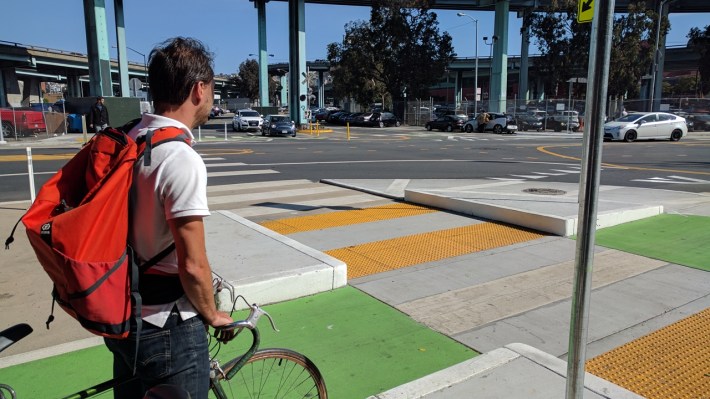

The lack of a fully raised intersection, he said, fell into a "it's better than nothing" trap. Speaking of which, the protected intersection at Division and 9th only goes in one direction, which, as Streetsblog pointed out in a previous story, is a mistake--SFMTA said they did that because bike counts were low going north-south. "But that's a chicken and egg argument," said the Dutch engineer. "If you don't build something, of course people aren't going to use it... a lot of what I see here are half-solutions."
From there, we backtracked to 7th Street, to see the newly protected bike lane there. Sloothaak pointed to the bus-boarding islands approvingly and commented that only a curb or some kind of raised concrete, such as the island, is really sufficient to keep cars out of the lane. That became abundantly clear when we had to stop and go around a van parked in the bike lane, as seen in the lead photograph. In other words, a parking-protected bike lane isn't something that should be done with paint alone. Sloothaak recommended the addition of soft hit posts until a concrete curb can be installed--or anything that is a physical barrier. He also wanted to know, again, why the green of the bike lanes doesn't continue across intersections. That's a question Streetsblog has asked many times and has never actually received a satisfactory answer.
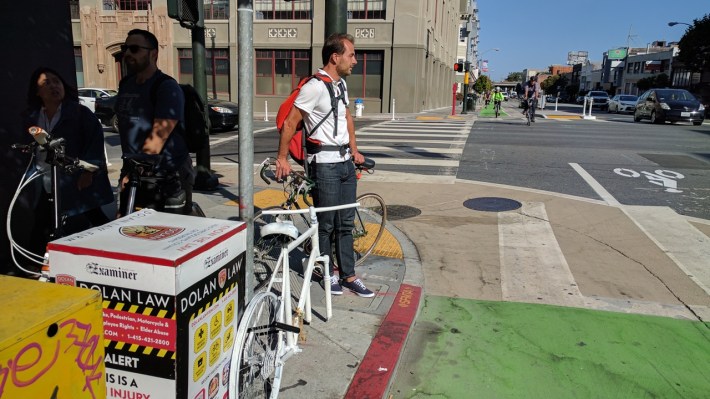
Streetsblog brought him to the intersection of 7th and Howard to see the ghost bike for Kate Slattery, who was killed a year ago this month. He explained the concept of a "Black Spot," as they call them in the Netherlands. "If someone dies in a traffic incident, we immediately take measurements and analyze it," he said. He said police, public transportation agencies, etc., look for ways to prevent the type of crash from happening again--and they implement changes. He was also shocked to hear about San Francisco's automatic speed enforcement camera woes. "I'm amazed there are not speed cameras... at this speed, with multiple lanes," he said, shaking his head and looking out at 7th and Howard. "The city wants to encourage cycling but they've created an unsafe environment."
We then proceeded to Market Street to head towards the Wiggle. Sloothaak agreed with something Streetsblog's readers know all too well--Market Street is a dangerous mess. We discussed taking some space from the outer edge of the sidewalk to create a truly protected bike lane. He liked the contra-flow bike lane on Polk, and remarked that it was the first piece of really good bike infrastructure he'd seen.
That said, he was critical of the sidewalk cut-through for cyclists riding across Fell and turning uptown on Market. Because the bike lane ends and the cut-through is the same color as the rest of the sidewalk, it was too hard to figure out, he said. He recalled riding through the intersection previously and thinking there was no way for a cyclist to turn right. While it was obvious what to do after watching local cyclists during rush hour, there was nothing intuitive about it for a newbie. "If I don't get it, there's something wrong," he said of the infrastructure. Fortunately, following the Dutch precedent of painting the bike lane all the way through the intersection and, in this case, across the cut-through, is a fairly simple prescription that Streetsblog hopes the SFMTA will consider.
He also didn't like that the bike signal was placed so high (well above the sight-line of a cyclist) and on the far side of that intersection, saying that he didn't even notice it until it was pointed out to him.
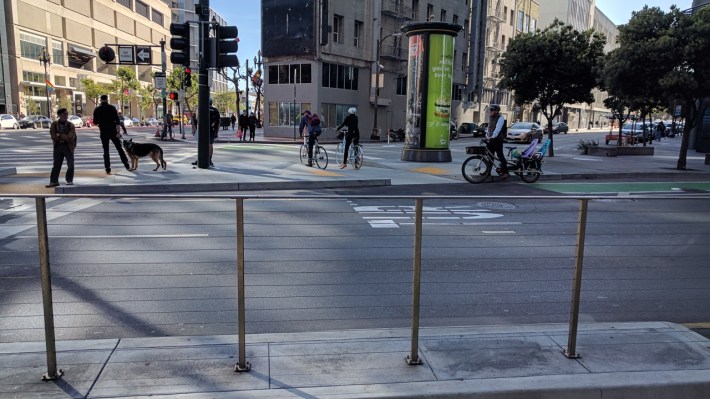
From there, we headed to the start of the Wiggle. Sloothaak seemed pretty baffled by the Buchanan intersection with its mess of train tracks and green sharrow bike markings. "How does this work!" he exclaimed. It took a while to explain to him that cyclists coming from the Wiggle and heading downtown had to cross Market on the left side of the intersection, instead of the intuitive right. "It doesn't make sense to cross on the left side of an intersection--make a new crossing on the opposite side," he said. "You see this and you are just confused."
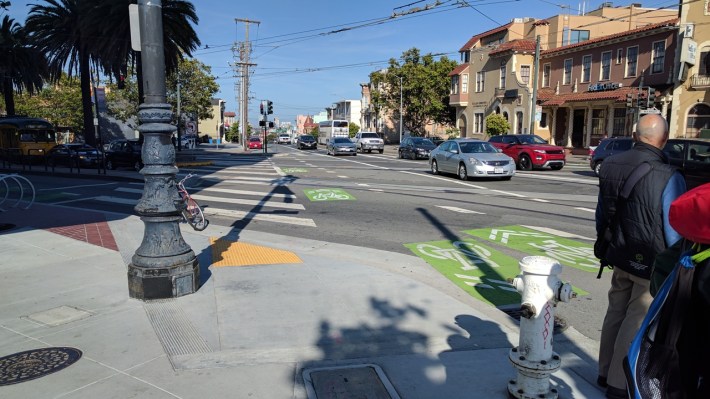
Once on the Wiggle, with its smaller, two-way neighborhood streets, Sloothaak seemed less critical. "It's fine not to have protected bike lanes here." But he did have one comment, and one that will be music to the ears of anyone who was involved in the Wiggle protest. He looked at the many four-way stop signs. "Do these intersections with bicycle priority in the bike [route] direction."
In other words, don't make cyclists come to a complete stop unless it's absolutely necessary, if you want to encourage cycling.
Once at the Panhandle, Streetsblog and Sloothaak stopped on the steps of the William McKinley monument and the Dutch "Beleidsadviseur" summed up his impressions: "It's really easy to get around by bike," he said. And despite his criticisms, he said that he "hasn't felt it's dangerous to bike... and there is a strong sense of bicycle lifestyle." He also said that in a conversation with members of the San Francisco Bicycle Coalition, he came to the conclusion that San Francisco needs a strong, pro-bicycle mayor to advocate for safety and better infrastructure. That said, he believes it should be a relatively easy lift. "Bike infrastructure is so much cheaper than new highways or transit... the improvements cost a fraction of what those others take."
But he knows that will take time. It took the Netherlands a few decades to get where they are--but they started in the 1970s. "You must design for bikes, for pedestrians, for small vehicles--you need to get rid of all of those multiple lanes." And if money to redesign the streets is still a problem, he recommends a process of removing free parking and charging for permits "with all the money going to bike infrastructure."
That's a prescription Streetsblog can get behind. That said, SF politics, especially when it comes to parking, are hard--and Streetsblog is well aware that SFMTA planners do the best they can. Some have even traveled to the Netherlands, Denmark, and other places to learn best practices first hand. SFMTA Project Manager Mike Sallaberry, for example, has made a real effort to study infrastructure overseas. And Supervisor Jane Kim was also part of a group that went to Denmark to study bike infrastructure.
Unfortunately, learning what to do is one thing. Actually getting it built, in the face of local and state politics, is another story.
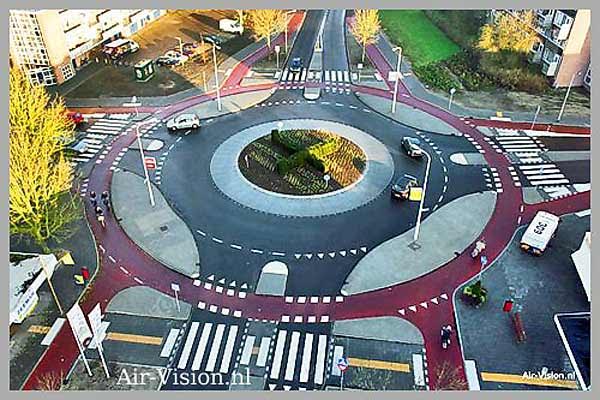
What do you think of Sloothaak's observations and recommendations? Can they be applied here in the Bay Area? Have you been to the Netherlands (or other bike-friendly countries of Northern Europe) and seen what top-notch infrastructure looks like?
Comment below.
